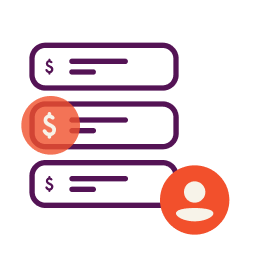If you’re worried about the potential impact of a recession on your small business, you’re not alone. Business owners are bracing for an economic downturn, with no idea when that may happen or how bad it may be. Eight in ten small business owners believe the economy will enter into a recession this year, according to The CNBC|SurveyMonkey Small Business Index Q2 2022 survey.
CEOs of larger businesses surveyed by The Conference Board were slightly less pessimistic. Nearly 60% said they expect the U.S. will have a very short, mild economic recession, while 11% foresee a challenging recession.
It’s impossible to predict when a downturn will occur or how long it will last, but one thing is for sure: small business owners should take steps now to prepare for potentially rocky economic times ahead.
There are numerous ways entrepreneurs can try to prepare for weathering the next recession, from cutting costs to diversifying product lines. Having access to financing may help small businesses when cash flow is uncertain, and can provide funding needed if the business needs to pivot to provide the products or services that are in demand.
Here, we’ll focus on why and how to leverage financing opportunities to help your business navigate the coming year.
1. Line Up a Line of Credit
A line of credit is one of the most popular forms of financing used by small businesses, according to the Federal Reserve’s Small Business Credit Survey. There’s a good reason for that. You borrow as much as you need (up to your credit limit) and only pay interest on the outstanding balance. Once you secure a line of credit, you don’t need to fill out an application every time you need to borrow more money.
The ideal time to get a line of credit is before you need it. If your business faces a cash crunch, it may be harder to qualify. Banks have the strictest standards for lines of credit, but offer the lowest interest rates, while online lenders are often more flexible on qualification requirements and can make credit decisions very quickly.
If you do nothing else, make sure your business has access to a line of credit.
2. Finance For Growth
While you may be tempted to slash costs, don’t ignore opportunities to grow your business. A Harvard Review Business Review research project, Roaring Out of Recession, found that companies that best survived recent recessions strike the right balance between cost cutting while continuing to invest in growth.
“These companies reduce costs selectively by focusing more on operational efficiency than their rivals do, even as they invest relatively comprehensively in the future by spending on marketing, R&D, and new assets.” Dubbed “progressive companies,” by the authors, they “deploy the optimal combination of defense and offense.”
Now may be the right time to leverage financing to invest in inventory, equipment or even real estate to help your business serve more customers, even in tough times.
For larger projects, a term loan that can be repaid over several months or years may be the best choice. Others may qualify for short-term financing options including business cash advances.
3. Lock In At Lower Rates
The Federal Reserve has already raised the federal funds rate twice in 2022, and several more rate increases are expected. Since business loan interest rates often track with this benchmark interest rate, it’s likely rates for many types of small business rates will rise.
Getting a loan now before interest rates increase may be crucial. Even if you secure a loan with a variable rate that may go up in the future, you’re qualifying now based on current rates. That may be harder to do as rates climb.
4. Keep Cash Flowing
One reality of an economic slowdown is that your customers may also pay more slowly. Slow payments are already a problem for many small firms; 64% of small businesses are affected by slow payments— and that’s in normal times, according to research by Fundbox. In a recession it will likely get worse.
If you have a B2B business (where you sell to other businesses) and offer your customers payment terms, consider invoice factoring to speed up payments. Instead of waiting 30, 60 or 90 days for customers to pay, you’ll get funds in a few days. This type of short-term financing is often more credit-flexible. Make sure you understand the cost of invoice financing or factoring and how that affects your bottom line.
5. Refinance
If your business is carrying debt, you may be able to refinance or consolidate debt with less expensive financing. A lower rate means more of your payment goes toward paying down the balance, rather than toward interest or fees. And lower payments can free up cash flow to invest in other areas of your business— or just to give your business some breathing room. The perfect scenario is to refinance debt with lower rates and lower payments, but sometimes you’ll wind up having to choose between one or the other.
Again, rates will continue to rise this year. Think ahead a year: your future self may be glad you locked in financing at today’s rates.
Bonus Tip: Get a Business Credit Card
A business credit card helps you track expenses and can save your business money with cash back rewards or other perks. It may also offer you a flexible and low-cost line of credit, especially when you take advantage of low rates, such as 0% introductory rates.
It’s a buyer’s market right now for credit cards, with many card issuers competing for your business. When the economy slows down, though, card issuers often respond by tightening their eligibility standards and it can be harder to get the card your business needs or wants.
Nav can help you compare options to find the right credit card for your business.
This article was originally written on May 31, 2022 and updated on June 6, 2024.



thanks for info
I worked in banking for over 25 years and these 5 tips plus 1 are very good advice. The rates of some of the companies mentioned are high, you may be able to get a better deal at your local bank. Maybe not. But the steps mentioned are great advice for preparing for the recession and for future growth. Do the steps now just to get your financing in shape for that opportunity for growth in your current market area or to take advantage of an opportunity you may have in another location. Be sure and operate your company properly. Only pay business expenses and do not pay personal expenses. That makes your company worth less if you decide to sell and oh by the way, that is fraud. Bankers take a dim view when you tell them you made more money than what it shows because you were able to shift some of the business income to pay personal debts so your company would not have to pay more in taxes. The banker thinks if you are not afraid of cheating IRS then you would have not second thoughts about cheating the bank.
Thanks for sharing your insights!